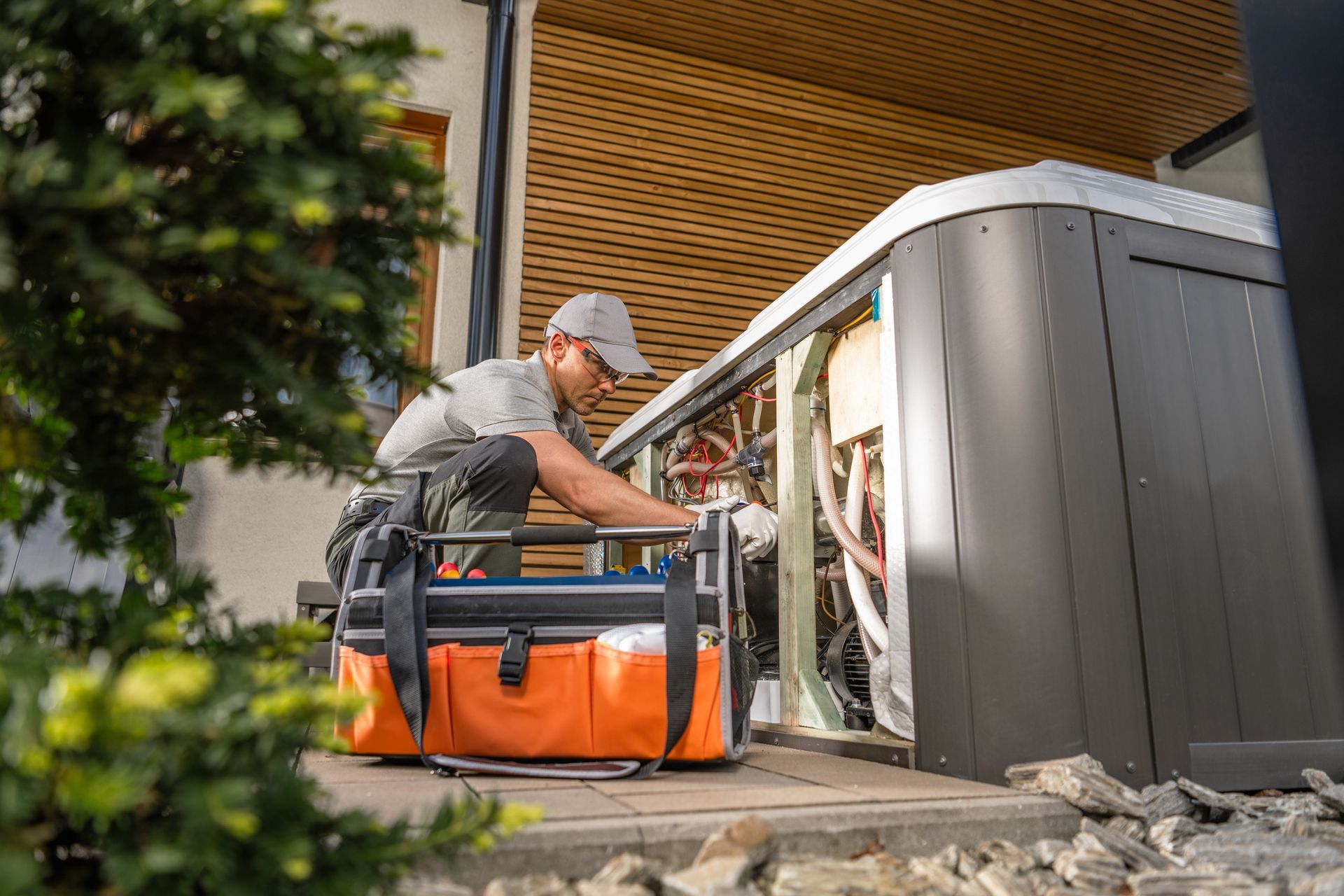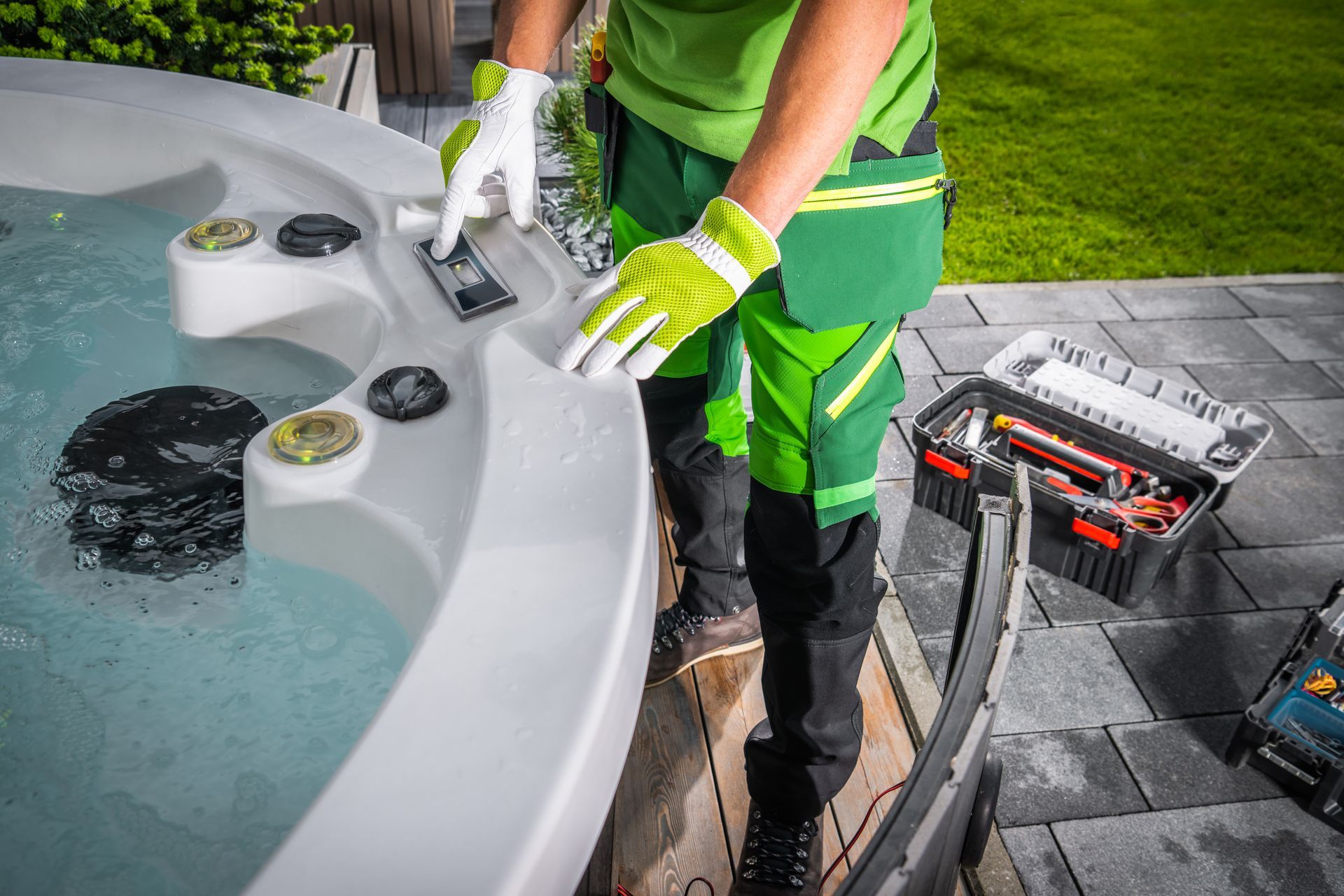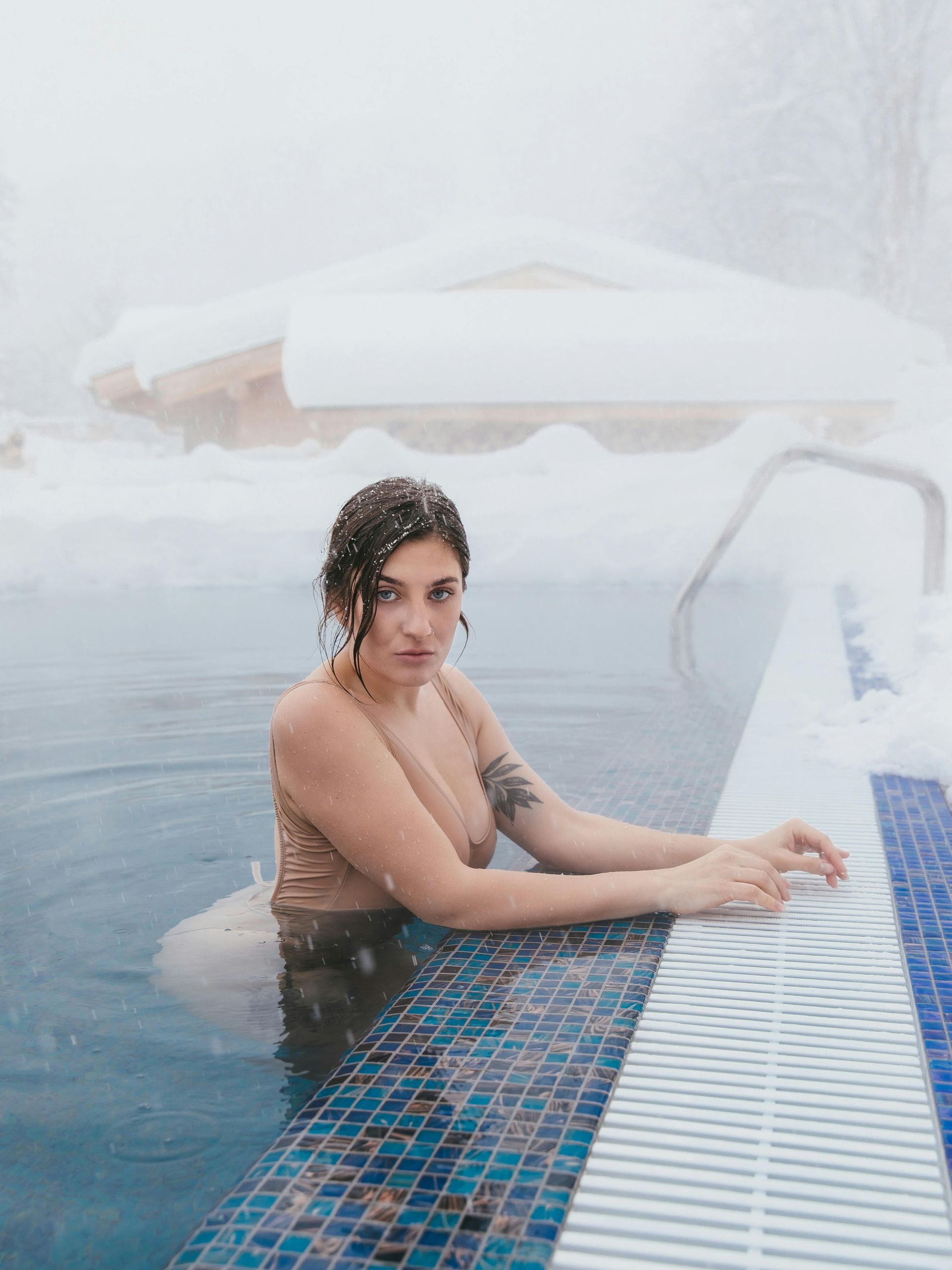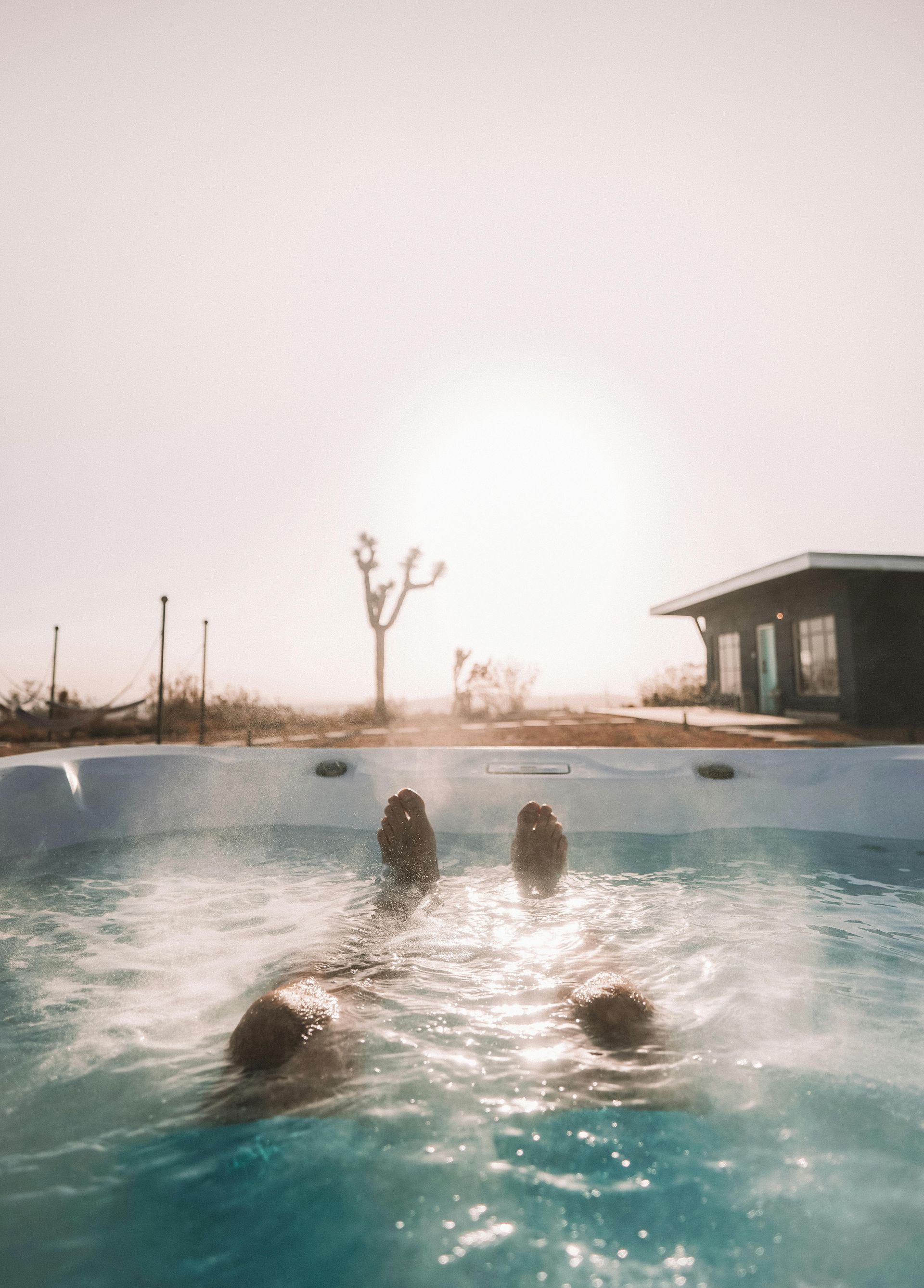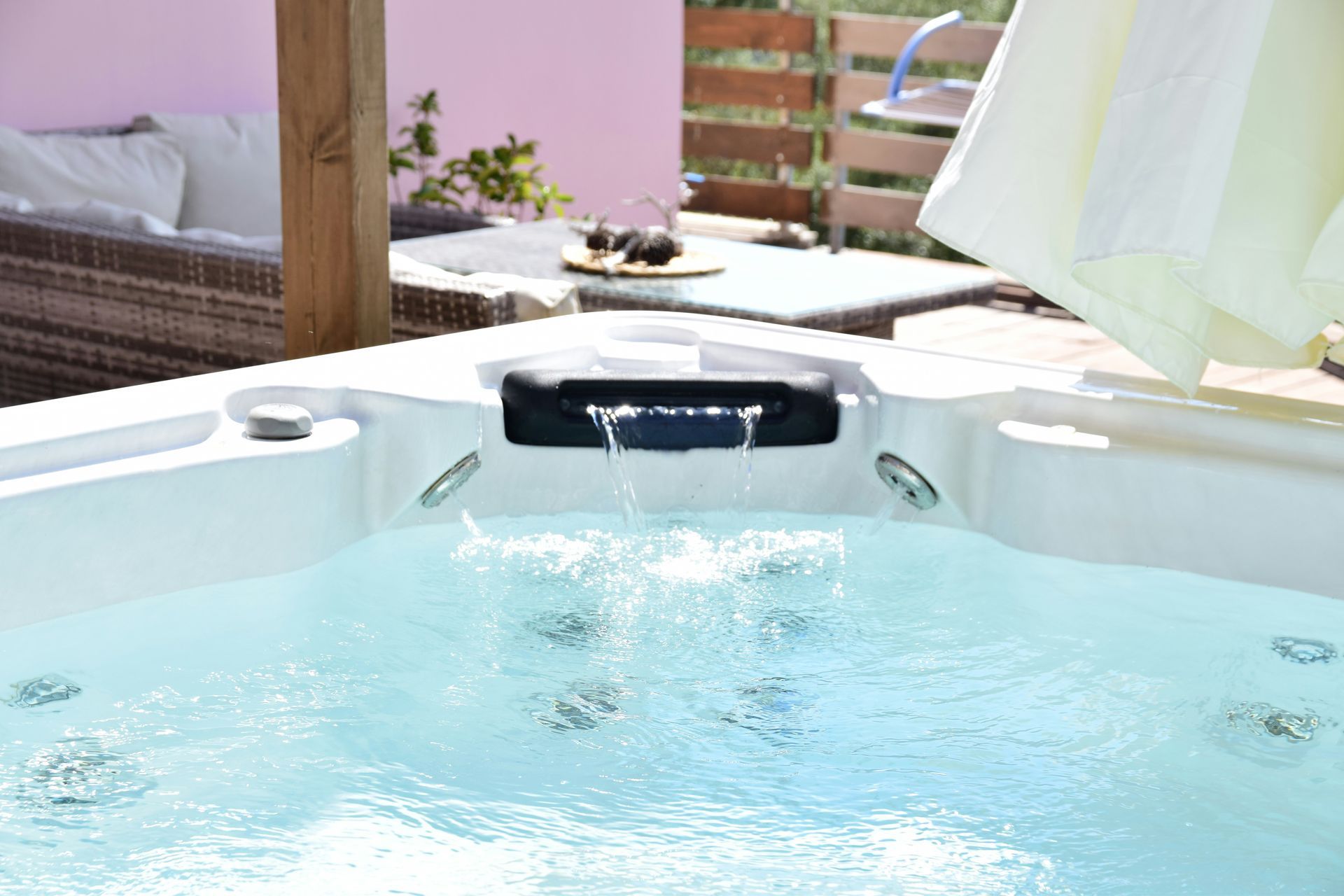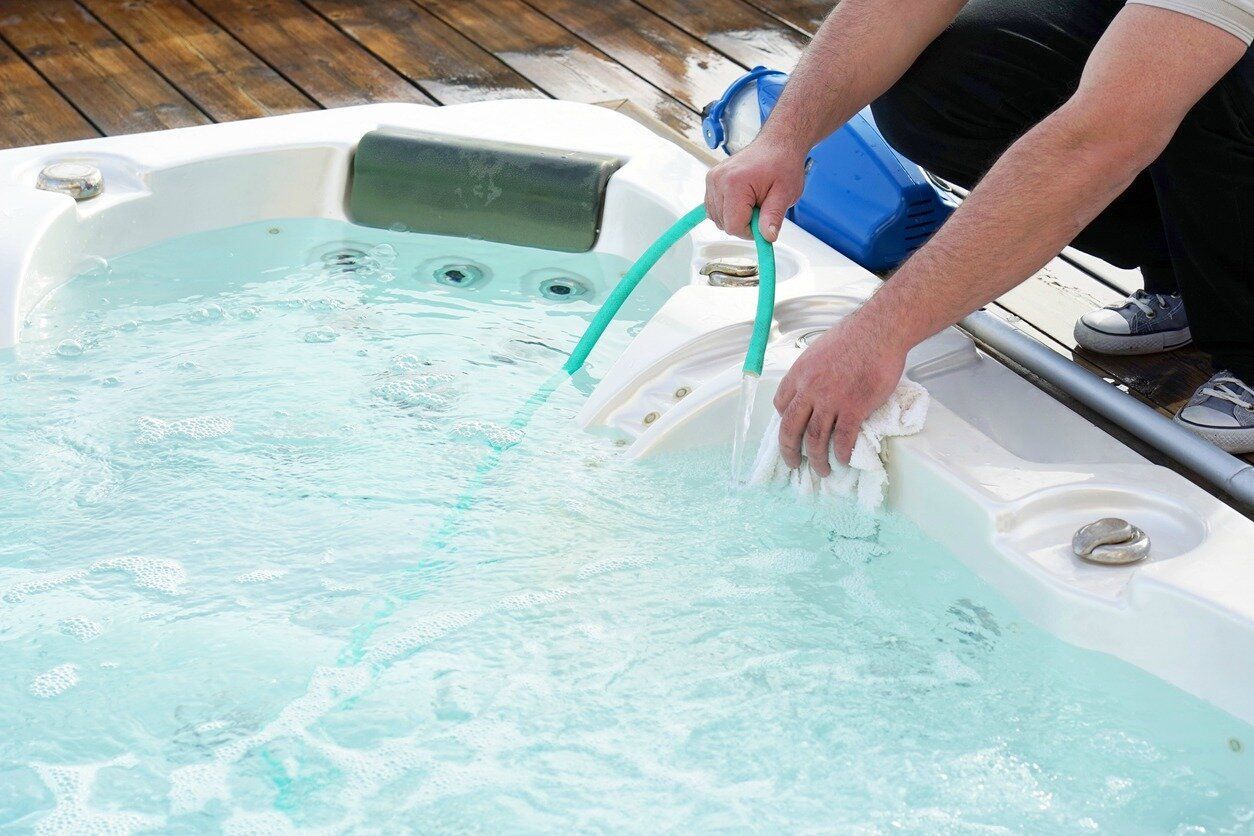The Complete Guide to Hot Tub Chemistry at High Altitudes
Soaking up in a high-altitude hot tub? You’ll want to watch for faster water evaporation and quicker pH swings because thin air shakes up your water chemistry. That means topping off water more often, tweaking sanitizer levels (think 10-15% extra chlorine), and checking your pH and alkalinity regularly to keep things comfy and safe. Filters get dirtier too, so clean them more. If you ever notice bigger issues, scheduling hot tub repair can help keep your spa running smoothly. Stick with these tweaks, and your mountain soak will stay perfect—and there’s plenty more hot tub service options to help you master the altitude challenge.
Key Takeaways
- High altitudes accelerate water evaporation, requiring frequent topping off and vigilant water balance monitoring to maintain hot tub chemistry.
- pH fluctuates rapidly at altitude; test and adjust alkalinity often to keep pH between 7.2 and 7.8 for water stability.
- Increase chlorine sanitizer levels by 10-15% at high altitude due to faster dissipation; monitor bromine levels regularly for buildup.
- Check water temperature daily and clean filters frequently to prevent chemical imbalances and scale buildup in high-altitude hot tubs.
- Test water chemistry biweekly, log results, drain and refill periodically, and apply altitude-specific surface treatments for optimal maintenance.
How Altitude Affects Hot Tub Water Chemistry
Even though it might sound surprising, altitude really changes how your hot tub water behaves. When you’re soaking up high in the mountains, those altitude effects kick in, and your water doesn’t act like it does back home. For starters, water evaporation happens faster up there because the air pressure is lower. That means your hot tub could lose water quicker than you expect, leaving you topping it off more often. Plus, the quicker evaporation can mess with your water’s balance, so it’s a good idea to keep an eye on it regularly. You’re not alone in this—lots of folks who love high-elevation hot tub performance in Colorado notice these changes. Thinking of it like your tub’s little altitude hangover helps—it’s just adjusting to the thinner air. So, embrace these quirks, adjust your care routine, and you’ll keep enjoying that perfect soak, no matter how high you go.
Understanding Ph and Alkalinity Changes at High Elevations
Since you’re dealing with thinner air up high, the pH and alkalinity in your hot tub water can shift more than you might expect. You’ll notice pH fluctuations happen quicker because the lower air pressure affects how carbon dioxide escapes from the water. This can make your water more alkaline or acidic faster than at sea level. It’s like your hot tub’s chemistry is playing a bit of a rollercoaster game with you. To keep things balanced, you’ll need to make alkalinity adjustments more often. Alkalinity acts like a buffer, helping to stabilize those pH swings, so don’t skip testing it regularly. Think of it as giving your tub a little extra love to stay comfy and safe for soaking. Joining others who live high up, you’re part of a club that knows the importance of paying close attention to these changes. Keep an eye on your pH and alkalinity, and your hot tub will thank you with perfect water every time.
Adjusting Sanitizer Levels for High Altitude Conditions
When you’re up high, sanitizer chemicals don’t work the same way as they do down low, so you’ll need to tweak their levels a bit. It’s smart to keep sanitizer concentrations within recommended ranges to keep your hot tub safe and sparkling. And don’t forget to check how well your sanitizer’s doing, or you might end up throwing a party for germs instead of friends!
Impact of Altitude on Sanitizers
Although high altitude might sound like a great spot for a hot tub soak, it actually changes how your sanitizer works. You see, sanitizer stability takes a hit because altitude effects mess with chemical reactions. Less oxygen and lower pressure can cause your sanitizer to behave differently, which means you’ll need to keep a closer eye on it.
Here’s a quick look at how altitude impacts sanitizer performance:
| Altitude Range | Oxygen Levels | Sanitizer Stability |
|---|---|---|
| Sea Level | Normal | High |
| 3,000 ft | Slightly Low | Moderate |
| 6,000 ft | Low | Reduced |
| 9,000 ft | Very Low | Considerably Reduced |
| 12,000 ft | Minimal | Poor |
Recommended Sanitizer Concentrations
Because high altitude changes how your sanitizer behaves, you’ll want to tweak the amounts you use to keep your hot tub water clean and safe. Different sanitizer types like chlorine and bromine react uniquely up there, so adjusting concentration levels is key.
Here’s a quick guide to help you out:
- Increase chlorine levels by about 10-15% since it dissipates faster at altitude.
- For bromine, boost concentration slightly but watch for buildup—it’s a delicate balance.
- Always test your water more often to catch any shifts early.
- Stick with recommended sanitizer types suited for your altitude; not all work equally well.
Monitoring Sanitizer Effectiveness
Now that you’ve adjusted your sanitizer levels for high altitude, it’s time to keep a close eye on how well they’re doing their job. Because sanitizer stability can waver up here, you can’t just set it and forget it. Test your water more often than usual—think of it like checking in on a friend who’s feeling a bit under the weather. Increasing your testing frequency helps you catch any dips before they become a problem. When you test, watch for changes in sanitizer effectiveness, and adjust the levels as needed. Staying on top of this creates a safe, clean soak for everyone, building your perfect mountain hangout.
Managing Water Temperature and Its Impact on Chemical Balance
When you crank up the heat on your hot tub at high altitudes, things don’t always behave the way you expect. Water temperature plays a big role in keeping your chemical balance just right. Too hot, and chemicals can break down faster; too cool, and they mightn't work effectively.
Here’s how to keep it balanced:
- Check temperature daily – Small changes can mess with your chemical levels.
- Adjust chemicals slowly – Don’t overcorrect; high altitude means things react differently.
- Use a reliable thermometer – Trusty tools help you stay on top of water temperature.
- Be patient – Chemical reactions take time, especially in thinner mountain air.
Managing water temperature means you’re not just soaking, you’re caring for your tub’s chemistry, too. You and your hot tub form a team—so keeping that balance keeps the good vibes flowing!
Common Challenges of Hot Tub Maintenance at High Altitude
Although keeping your hot tub sparkling at high altitude can feel like a science experiment, it’s totally doable once you know the quirks. One of the biggest common maintenance headaches you’ll face is how altitude effects mess with water chemistry. At higher elevations, water boils at lower temperatures, which can throw off your hot tub’s heat balance and chemical reactions. This means your usual sanitizer levels mightn't work as expected, and you might see more frequent pH swings. Plus, the air pressure changes can cause bubbles to form differently, making it tricky to keep the water clear and comfortable. You might also notice your filters clog up faster because of these changes. But don’t worry—once you understand these altitude effects, you’ll get the hang of adjusting your routine. For more detailed strategies, check out this guide on mountain home spa maintenance. You’re definitely not alone in this, and with a bit of patience, your hot tub will stay inviting no matter the elevation.
Best Practices for Testing and Monitoring Water Chemistry
Since water chemistry can change quickly at high altitudes, keeping a close eye on it's key to enjoying your hot tub without any surprises. You want your soak to be relaxing, not a chemistry experiment gone wrong. Here’s how you can stay on top of your water testing and keep that chemical balance just right:
- Test your water at least twice a week—altitude can throw things off fast, so don’t slack on this.
- Use reliable test strips or a digital tester for quick, accurate readings.
- Keep a log of your results; spotting trends helps you catch issues before they get messy.
- Adjust chemicals slowly and in small amounts to avoid overcorrecting and causing new problems.
Tips for Preventing Scale and Corrosion in Mountain Environments
You’ll want to keep an eye on water hardness because too much can cause annoying scale buildup in your hot tub. Balancing the pH level is also key—it stops corrosion before it even thinks about starting. And don’t forget, using protective surface treatments gives your tub an extra shield against mountain wear and tear.
Water Hardness Management
When you’re soaking in a hot tub high up in the mountains, managing water hardness becomes extra important to keep things running smoothly. Hard water, loaded with calcium deposits and magnesium levels, can cause scale buildup that clogs jets and damages equipment.
Here’s how you can handle it like a pro:
- Test your water regularly to track calcium and magnesium.
- Use a water softener or hardness reducer if levels get too high.
- Drain and refill your tub periodically to keep minerals in check.
- Clean filters often to stop scale from settling and causing trouble.
Ph Level Control
Anyone who's spent time in a mountain hot tub knows that keeping the pH level just right is a bit like balancing a seesaw—too high or too low, and you risk scale buildup or corrosion sneaking in. To keep things cozy and damage-free, you’ll want to test your hot tub water regularly. Aim for a pH testing frequency of at least twice a week, especially when the weather swings. Use pH balancing techniques like adding small amounts of pH increase or decrease to nudge it into the ideal range of 7.2 to 7.8. Remember, consistent checks and gentle adjustments keep your tub inviting and safe, letting you enjoy those mountain soak sessions without worrying about costly damage.
Protective Surface Treatments
Keeping your pH in check is a great start, but mountain hot tubs face some extra challenges that call for a little extra protection. To keep your tub’s surface happy and healthy, you’ll want to explore surface treatment options designed to prevent scale and corrosion. For those in colder climates, learning about cold weather hot tub performance in Summit County can help you prepare for seasonal changes.
Here are some friendly tips on application techniques to keep in mind:
- Choose the right sealant — Look for products made for high-altitude conditions; they last longer against tough minerals.
- Clean thoroughly before applying — Dirt and grime can block protection, so scrub well.
- Apply evenly with a soft cloth or brush — This guarantees full coverage without wasting product.
- Reapply regularly — Don’t forget this step; mountain minerals are relentless!
Looking for help in your area? Summit Hot Tub Service proudly offers care across the region. Check their service area to see if they can assist with your hot tub needs.
Frequently Asked Questions
Can Hot Tubs Be Safely Used Year-Round at High Altitudes?
You can safely enjoy your hot tub year-round at high altitudes by staying committed to year-round maintenance and temperature regulation. You'll join a community of enthusiasts who keep their tubs perfect despite the challenging environment.
What Are the Best Hot Tub Cover Options for Mountain Climates?
You’ll want hot tub covers with thick insulating materials and strong weather resistance to handle mountain climates. These covers keep your tub warm and protected, so you and your friends can enjoy cozy, year-round soaking together.
How Often Should Hot Tub Filters Be Replaced at High Altitudes?
You’d think you’d need to swap filters daily with altitude impact, but don’t worry! Stick to replacing your hot tub filters every 3-4 months. Regular filter maintenance keeps your mountain soak crisp and inviting.
Are There Specific Hot Tub Models Recommended for High Elevation Use?
You’ll want hot tub models with energy efficiency and features designed for altitude challenges. Look for brands that emphasize insulation and pressure regulation, so you’ll enjoy consistent warmth and feel part of a community that values smart, reliable choices.
Can Altitude Affect the Lifespan of Hot Tub Plumbing and Equipment?
Think of your hot tub as a mountain climber facing thin air; altitude challenges plumbing maintenance and equipment durability. You’ll need extra care and community tips to keep everything strong and lasting longer in high places.
Final Thoughts
So, keeping your hot tub happy at high altitude isn’t rocket science, but it sure feels like a mini science experiment sometimes! Just remember to tweak your pH, sanitizer, and temperature like a pro, and you’ll avoid turning your soothing soak into a chemistry disaster. With a little care and the right habits, you’ll enjoy crystal-clear water that’s as invigorating as mountain air—no matter how high you go. For extra peace of mind, scheduling regular hot tub service can help keep everything running smoothly.
Ready to make maintenance simple?
Contact Summit Hot Tub Service today and let the experts handle the details so you can just relax and enjoy your soak.

